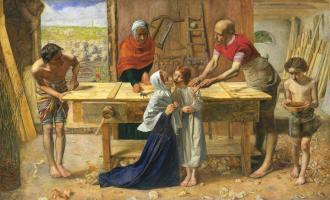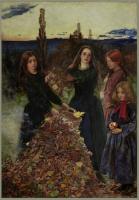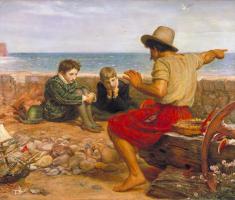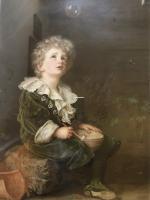Sir John Everett Millais
The English painter Sir John Everett Millais was one of the most prosperous artists in history. He entered the Royal Academy Schools when he was only eleven, the youngest pupil ever accepted. He was elected a Member of the Royal Academy in 1863, knighted in 1885, and became President of the Royal Academy in 1896, the year of his death.
As a young man he was a founder member of the Pre-Raphaelite Brotherhood, a band of painters who wanted to revive the sincerity and deep significance which they believed had existed in art before the time of Raphael. Their work was serious in subject matter, usually with a detailed natural setting, and it conveyed a spiritual message through a variety of symbols.
Four years before beginning this painting Millais had remarked to a fellow Pre Raphaelite, ‘Is there any sensation more delicious than that awakened by the odour of burning leaves? To me nothing brings back sweeter memories of the days that are gone; it is the incense offered by departing summer to the sky; and it brings one a happy conviction that Time puts a peaceful seal on all that is gone.’
 John Ruskin, the great nineteenth-century critic, considered Autumn Leaves to
be ‘the first instance of a perfectly painted twilight’; Millais had captured
‘the glow within the darkness’. And the artist’s wife Effie wrote that he
wished ‘to paint a picture full of beauty and without subject’. Yet Millais
himself has recorded that Autumn Leaves was not just a charming, wistful scene,
but was intended , to arouse the deepest religious reflections.
John Ruskin, the great nineteenth-century critic, considered Autumn Leaves to
be ‘the first instance of a perfectly painted twilight’; Millais had captured
‘the glow within the darkness’. And the artist’s wife Effie wrote that he
wished ‘to paint a picture full of beauty and without subject’. Yet Millais
himself has recorded that Autumn Leaves was not just a charming, wistful scene,
but was intended , to arouse the deepest religious reflections.
The two girls at the centre, one with a basket, one holding leaves, are Effie’s younger sisters, Alice and Sophie; the others are local youngsters, Matilda Proudfoot and Isabella Nicol, whom Effie had found to model. The setting is the garden of Annat Lodge in Perthshire, its distant hills shading into purple at the far horizon. The dresses of the two older girls act as dark foils for the heap of papery fallen leaves — bronzes, reds and pale yellowish-greens — and the younger girls are in russet and deep purple, blending with the colours around them.
They have a mystical look, as if they are taking part in an ancient ritual charged with intense emotional feeling. Pictured at twilight, near the end of the year, they are just beginning their lives, suggesting an eternal cyclic renewal. Millais has used colour and the elements of nature to convey his own understanding of the deep spiritual beauty of life in this sensitive and evocative painting.
 Millais’ grandson, William James, was the model for this picture, originally
titled A Child’s World. This picture was used as the advertisement for
Pears, Soap. When bought by Pears, Millias’ Permission had still to be
obtained for addition of a bar of soap, for use as an advertisement.
Bubbles remained oe of the most iconic advertising symbols ever devised,
and many of the colour prints that Pears later published hung in homes around
the world.
Millais’ grandson, William James, was the model for this picture, originally
titled A Child’s World. This picture was used as the advertisement for
Pears, Soap. When bought by Pears, Millias’ Permission had still to be
obtained for addition of a bar of soap, for use as an advertisement.
Bubbles remained oe of the most iconic advertising symbols ever devised,
and many of the colour prints that Pears later published hung in homes around
the world.
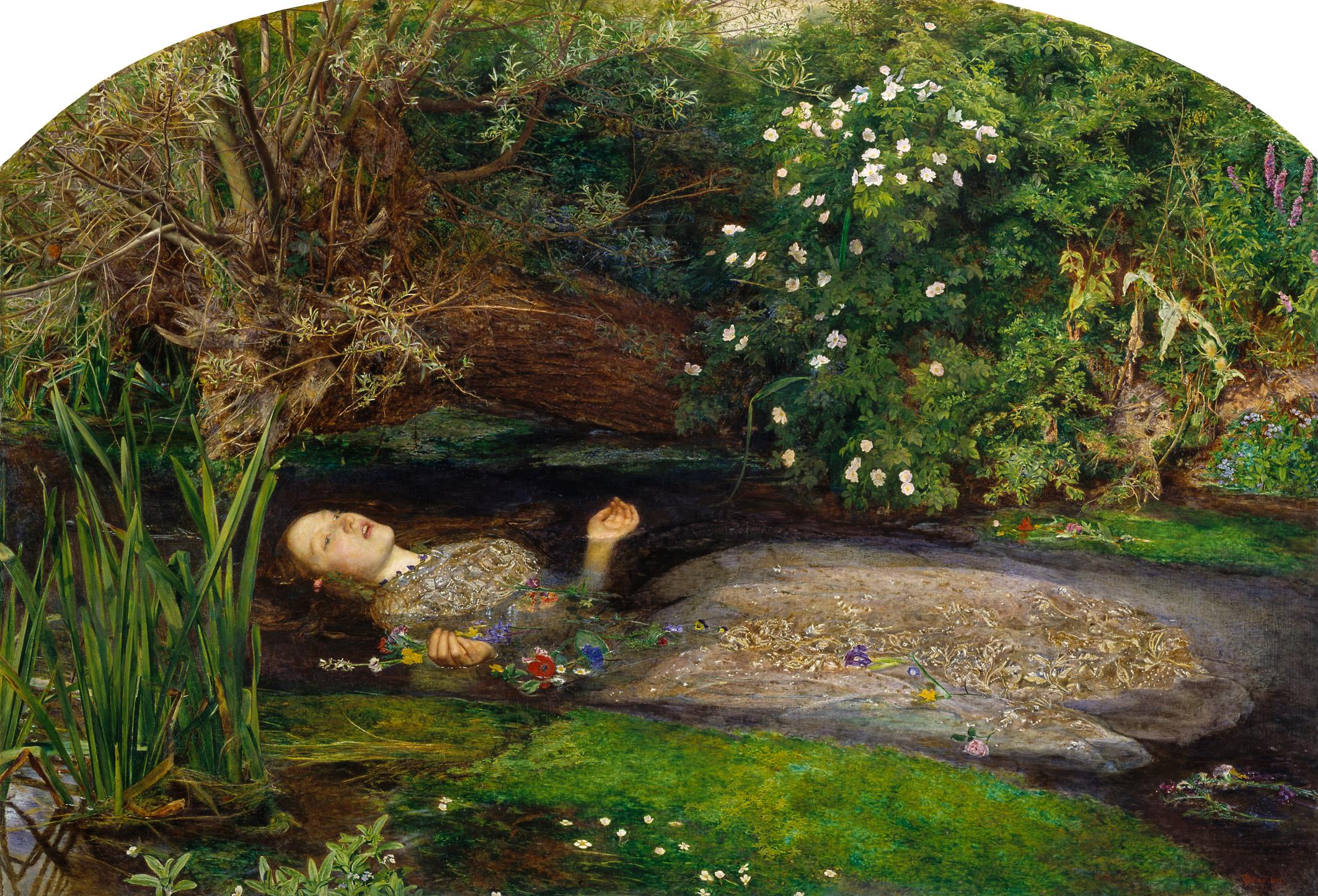 The Pre-Raphaelites experimented with every new pigment available, glazing
them for maximum luminosity, onto canvas primed with zinc white. Ophelia
‘reads’ like a colour merchant’s catalogue, with its cobalt blue, madder
lake, chrome yellow, chromium oxide and zinc yellow. Millais began painting
the background out of doors, near Kingston-upon-Thames. The painting was
completed in London the following winter.
The Pre-Raphaelites experimented with every new pigment available, glazing
them for maximum luminosity, onto canvas primed with zinc white. Ophelia
‘reads’ like a colour merchant’s catalogue, with its cobalt blue, madder
lake, chrome yellow, chromium oxide and zinc yellow. Millais began painting
the background out of doors, near Kingston-upon-Thames. The painting was
completed in London the following winter.
Lizzie Siddal, the Pre-Raphaelite muse, wearing an antique brocade gown, had to line in a bath of water, heated by oil lamps from below. The cold she caught as a result brought the threat of damages against the artist from her father.


